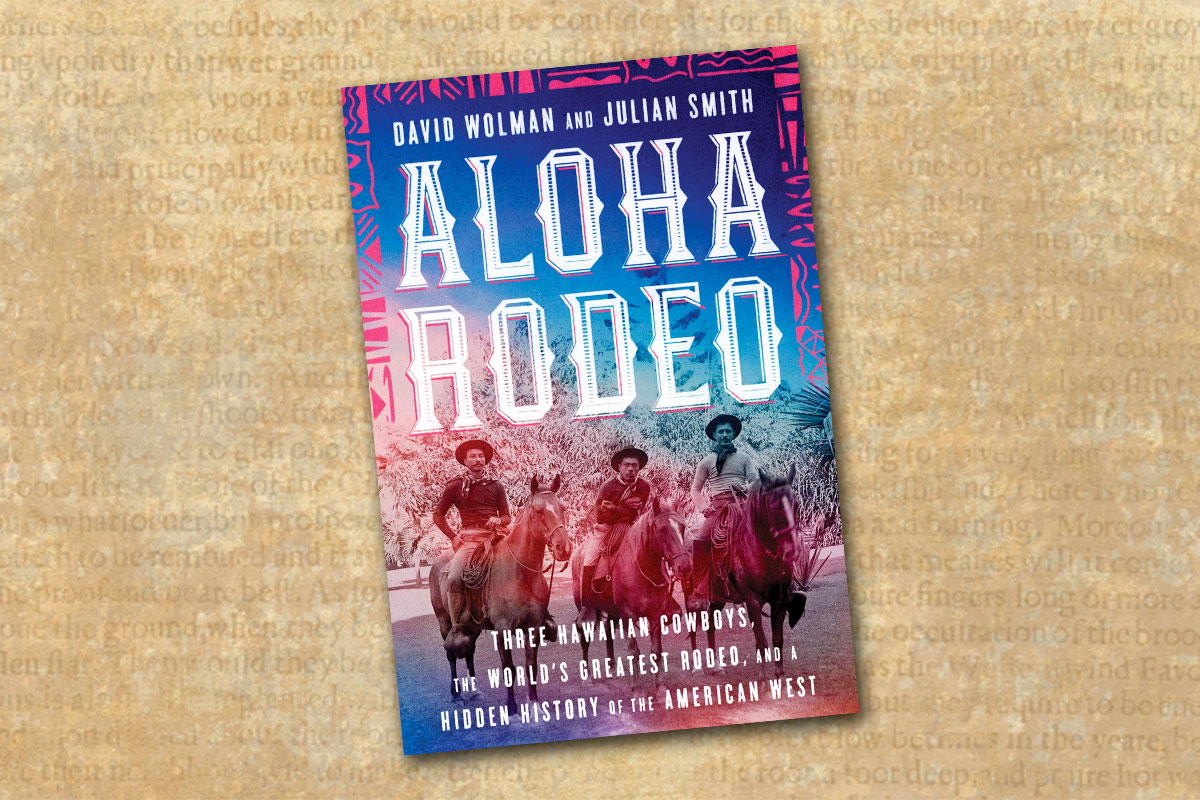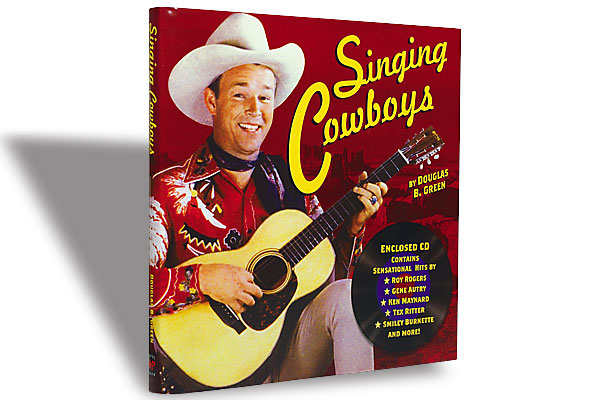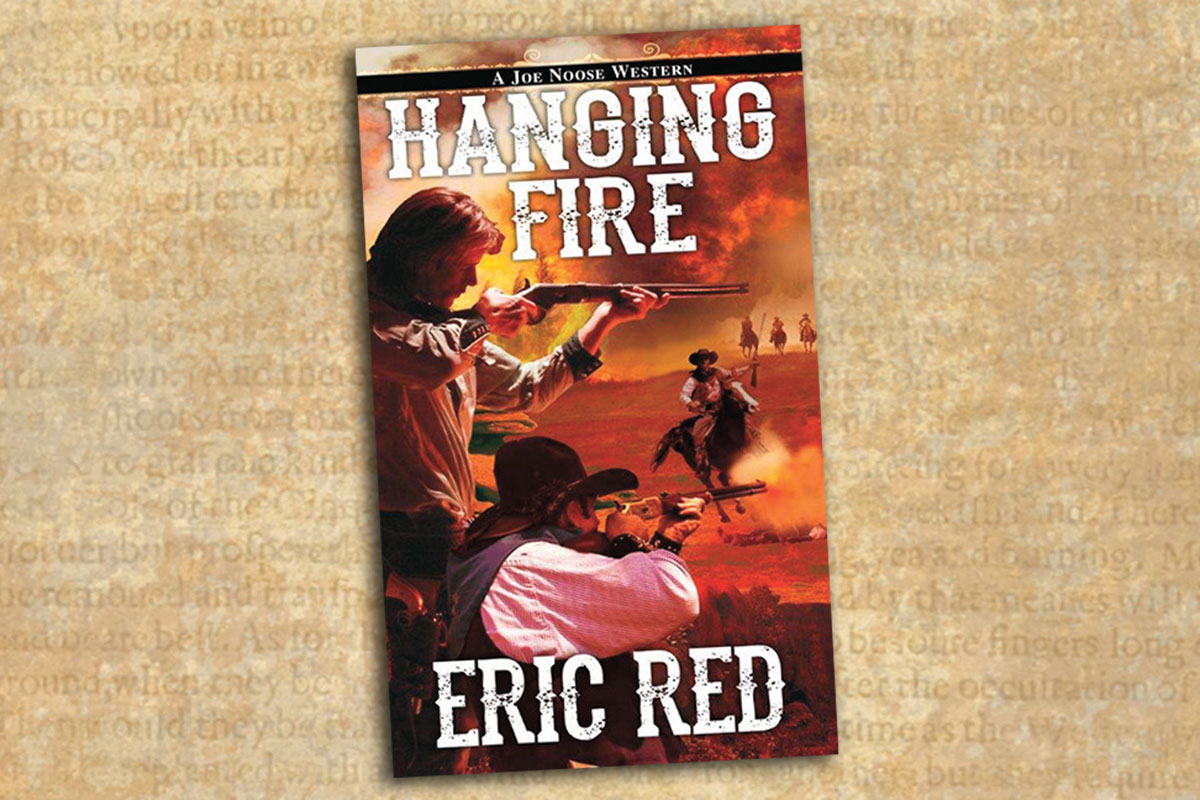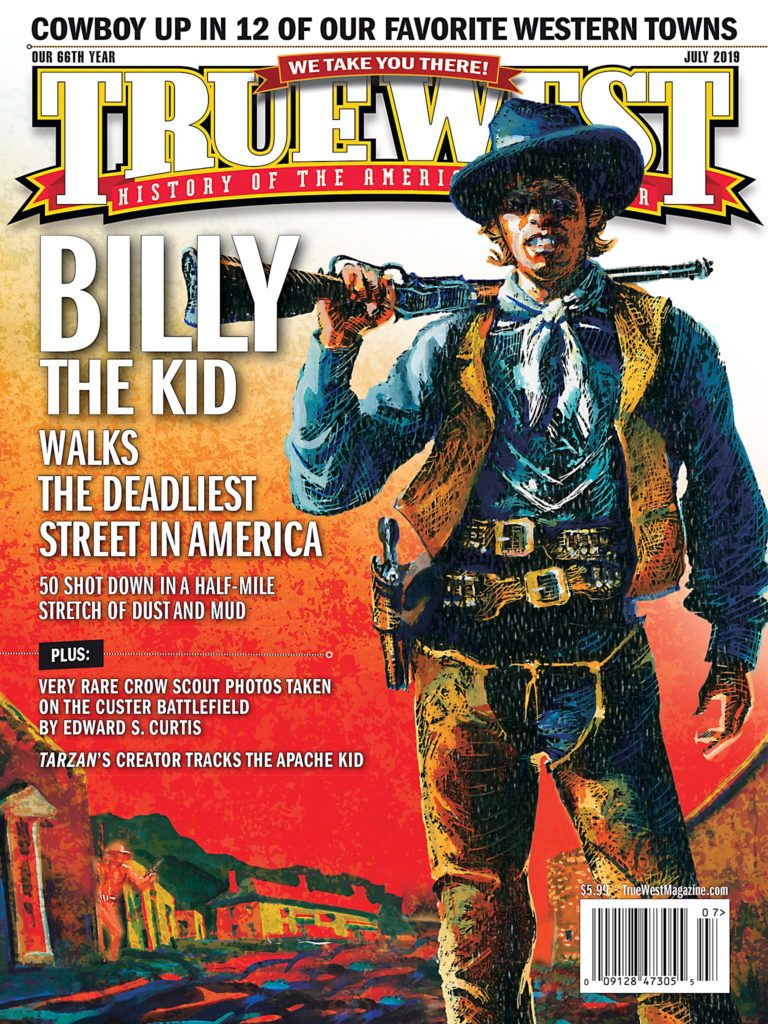
What is the American West and where does it begin and end?” These questions have been debated consistently for well over a century, but after anyone reads David Wolman and Julian Smith’s Aloha Rodeo: Three Hawaiian Cowboys, the World’s Greatest Rodeo, and a Hidden History of the American West (William Morrow, $27.99) they will have to agree that the Western edge of the Wild West extends out across the Pacific Ocean to include the state of Hawaii. “If Hawaii had a Deadwood, it was Waimea,” write Wolman and Smith. A visitor in the mid-19th century would have found a town of more than a thousand residents with a tannery, a rendering plant, a mission school, saloons and livestock so abundant that one resident called Waimea a “cattle pen.”
The first collaboration between Wolman, a contributing editor to Outside magazine, and Smith, author of Crossing the Heart of Africa: An Odyssey of Love and Adventure, should not be their last. The writing duo expertly weave a complex story of Hawaii’s 18th- and 19th-century transformation from isolated island kingdom to American colony; the parallel rise and settlement of the American cattle, cowboy and Hawaiian paniolo culture, industry and economy; and the growth and popularity of Wild West shows, entertainers and rodeos, including Buffalo Bill Cody and the Cheyenne Frontier Days Rodeo, in the latter decades of the 1800s. The result leaves the reader with an understanding that the international popularity of the American cowboy is eternally entwined between the industries of cattle ranching and Western entertainment.
Students and scholars of the American cowboy in the Western Hemisphere will find Wolman and Smith’s groundbreaking Aloha Rodeo is not only a must-read, but an essential addition to the cowboy collector’s library. The very original synthesis is one of the best single volumes on the rise and diversity of the North American cattle industry, the cowboy culture—both in practice and in popular culture and entertainment (including Wild West shows, rodeo and pulp fiction)—in the 19th and early 20th centuries. Aloha Rodeo joins Cattle Kingdom by Christopher Knowlton, John Ryan Fischer’s Cattle Colonialism and John Branch’s The Last Cowboys as significant cowboy cultural histories written in the past two decades.
In addition, Wolman and Smith’s intellectual decision to conclude their epic story in the present reminds—and cautions—the reader that the Hawaiian paniolo culture is a cornerstone of the American cowboy experience on the verge of disappearing. As the authors state so eloquently in their epilogue, “Paniolo…are an endangered species. Most cattle management nowadays is done from the seat of an ATV. When it comes to professional cowboys, those who truly depend on horses for work, there are perhaps 30 left on the island, with maybe two dozen on Maui. Yet rodeo is as popular as ever. Contests and cowboy-themed celebrations run throughout the year and on all the major islands.” Let’s all hope that Aloha Cowboy does not just inspire readers, but a new generation of paniolos, too.
—Stuart Rosebrook
Texas Rangers Battle On
Shielding yourself from flying lead makes perfect sense, and so does a long nonfiction book if a writer (in this case, writers) has plenty of new information to share. And that’s the case with The Texas Rangers in Transition: From Gunfighters to Criminal Investigators, 1921-1935 by Charles H. Harris III and Louis R. Sadler (University of North Texas Press, $34.95), a new look at the Rangers as the storied state law enforcement agency moved from its horseback and 44.40 days to high horsepower cars and Tommy guns. As they have with their previous Ranger-related books, Harris and Sadler dug deep in their research. The book’s bibliography shows they relied heavily on transcriptions of recorded interviews, correspondence and government records, in addition to contemporary newspaper coverage and other published works.
—Mike Cox, author of Time of the Rangers—Texas Rangers: From 1900 to the Present
Artistry in Arms
Smith & Wesson Engraving, A Celebration of Artistry in Arms from the Company’s Founding until the Present Day (Mowbray Publishing, $84.45 postpaid) by author Michael J. Kennelly covers the entire spectrum of engraved S&W handguns from its earliest No. 1, .22 Rimfire revolver, all the way up through the company’s modern semi-auto pistols. This 9-inch by 12-inch hardcover volume’s 404 pages contain over 1,400 large color photos, revealing the exquisite detail in each arm shown, including work done by the factory, Tiffany & Co. and non-factory engravers. The work also contains a chronological listing of S&W’s factory and contract engravers and biographies on select artisans. This book is valuable as research, along with being enjoyable to peruse again and again.
—Phil Spangenberger, True West’s Firearms Editor
Comanche Jack
Ever since James Fenimore Cooper introduced his “Leatherstocking” character,
the image of the intrepid white scout, wise to the ways of Indians, became embedded in
literature. Of course, real life versions existed—from Daniel Boone to William F. “Buffalo Bill” Cody. Many of these nimrods received treatment in book-length biographies, one of the most recent being a joint effort by Clint E. Chambers and Paul H. Carlson in their Comanche Jack Stilwell: Army Scout and Plainsman (University of Oklahoma Press, $24.95). Fast-paced and well researched, the study of this colorful character, who ran away to the West as a teenager, deserves attention, especially by those interested in the Indian Wars.
—John Langellier, author of Trapdoor Springfield
Annie Oakley Rides Again
Annie Oakley was an expert rifle shot, an accomplished equestrian, the star of the Buffalo Bill Cody Wild West Show, and, in bestselling author Kari Bovee’s latest novel, Peccadillo at the Palace: An Annie Oakley Mystery (Spark Press, $16.95), an excep- tional amateur sleuth. The second title in Bovee’s Annie Oakley mystery series, is a clever and gripping whodunit. It’s a fun romp through history with twists and turns that will keep readers guessing. While hunting down the culprit who wants do away with Queen Victoria, Annie finds her life and that of her husband also at risk. One can’t help but root for the famous sure-shot to save the monarchy.
—Chris Enss, author of Buffalo Gals: Women Of Buffalo Bill’s Wild West Show





